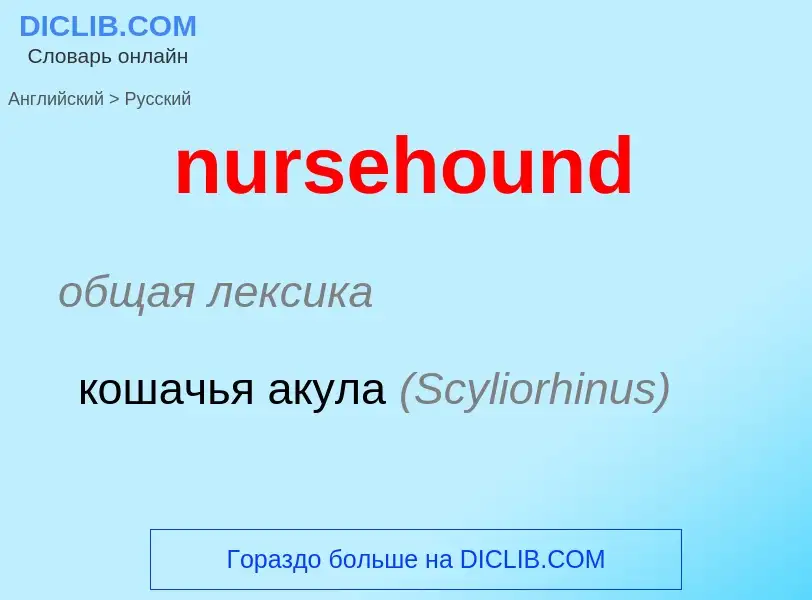Vertaling en analyse van woorden door kunstmatige intelligentie ChatGPT
Op deze pagina kunt u een gedetailleerde analyse krijgen van een woord of zin, geproduceerd met behulp van de beste kunstmatige intelligentietechnologie tot nu toe:
- hoe het woord wordt gebruikt
- gebruiksfrequentie
- het wordt vaker gebruikt in mondelinge of schriftelijke toespraken
- opties voor woordvertaling
- Gebruiksvoorbeelden (meerdere zinnen met vertaling)
- etymologie
nursehound - vertaling naar russisch
общая лексика
кошачья акула (Scyliorhinus)
общая лексика
большая пятнистая акула (Scyliorhinus stellaris)
Wikipedia

The nursehound (Scyliorhinus stellaris), also known as the large-spotted dogfish, greater spotted dogfish or bull huss, is a species of catshark, belonging to the family Scyliorhinidae, found in the northeastern Atlantic Ocean. It is generally found among rocks or algae at a depth of 20–60 m (66–197 ft). Growing up to 1.6 m (5.2 ft) long, the nursehound has a robust body with a broad, rounded head and two dorsal fins placed far back. It shares its range with the more common and closely related small-spotted catshark (S. canicula), which it resembles in appearance but can be distinguished from, in having larger spots and nasal skin flaps that do not extend to the mouth.
Nursehounds have nocturnal habits and generally hide inside small holes during the day, often associating with other members of its species. A benthic predator, it feeds on a range of bony fishes, smaller sharks, crustaceans, and cephalopods. Like other catsharks, the nursehound is oviparous in reproduction. Females deposit large, thick-walled egg cases, two at a time, from March to October, securing them to bunches of seaweed. The eggs take 7–12 months to hatch. Nursehounds are marketed as food in several European countries under various names, including "flake", "catfish", "rock eel", and "rock salmon". It was once also valued for its rough skin (called "rubskin"), which was used as an abrasive. The International Union for Conservation of Nature (IUCN) has assessed the nursehound as Vulnerable, as its population in the Mediterranean Sea seems to have declined substantially from overfishing.





